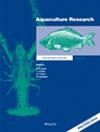Genetic Diversity of Oreochromis shiranus (Boulenger 1905) After Six Consecutive Generations of Selective Breeding Compared With Corresponding Wild Populations
Abstract
Aquaculture in sub-Saharan African accounts for less than 2% of world aquaculture production. The use of unimproved species limits the growth of aquaculture. In order to increase production, there is a need to develop aquaculture species that show vigor and adapt to different culture conditions. A genetic improvement program for Oreochromis shiranus was initiated at the National Aquaculture Center (NAC), in Zomba, Malawi. The program used pedigree records during mate allocation to avoid mating of siblings. After six consecutive generations of selection, a sample of 32 fish was taken for genetic analysis using a panel of 16 microsatellite markers. Genetic diversity and population differentiation indices of the sixth filial generation (F6) were compared with wild fish populations sampled from the corresponding locations from which the initial brood stock was collected. The study results show that the genetic diversity of the F6 generation and wild populations was not significantly different after the Kruskal–Wallis tests. However, the number of private alleles was lower in generation F6 (0.80) than in the overall average for wild populations (1.28). Discriminant analysis of principal components (DAPCs) supported analysis of molecular variance (AMOVA) by showing that there were no significant overlaps of inertia ellipses among F6 generation and wild populations. The experimental population differentiated into a separate group because of the random brood stock contribution from only a few fish from the wild population. The results suggest that the initial genetic diversity of the brood stock was sufficient as shown by the high number of alleles and polymorphic information content (PIC) values which contributed to the success of the selection program. The selection program successfully produced large fish at harvest and ensured genetic diversity of the F6 generation.


 求助内容:
求助内容: 应助结果提醒方式:
应助结果提醒方式:


